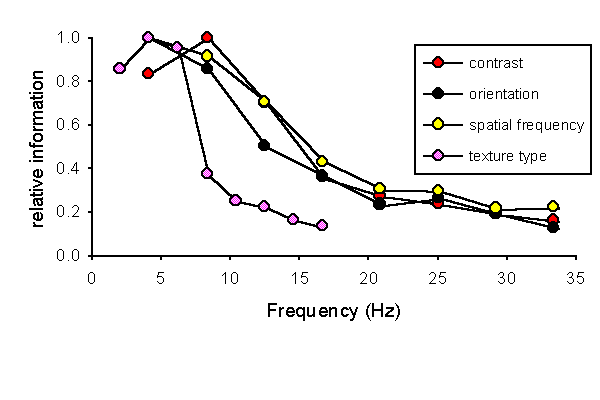
We recorded local field potentials in the parafoveal representation in V1 with a multi-contact electrode which provided for sampling of neural activity at 16 sites along a vertical penetration. Differential recordings at adjacent contacts were transformed into an estimate of current source density (CSD), to provide a measure of local neural activity.
We used m-sequence stimuli to map the region of visual space which provided input to the recording site. The local field potential recorded in macaque V1 has a population receptive field (PRF) size of approximately 2 deg^2.
We assessed spatial tuning by the responses to two-dimensional Gaussian noise, spatially filtered to retain power only within one octave. Responses to achromatic band-limited noise stimuli revealed a prominent bandpass spatial tuning in the upper layers, but a more lowpass spatial tuning in lower layers.
We assessed orientation tuning by the responses to band-limited noise whose spectrum was further restricted to lie within 45-deg wedges. The local field potential showed evidence of orientation tuning at most sites. Orientation tuning in upper and lower layers was manifest by systematic variations not only in response size but also in response dynamics.
We assessed chromatic tuning by the responses to isotropic band-limited noise modulated in a variety of directions in tristimulus space. Some lower-layer locations showed a nulling of response under near-isoluminant conditions. However, response dynamics in upper and lower layers depended not only on luminance contrast, but also on chromatic inputs.
Responses to near-isoluminant stimuli and to low-contrast luminance modulation were shifted to lower spatial frequencies.
We determined the extent to which various temporal frequencies in the response conveyed information concerning spatial frequency, orientation, and color under the steady-state conditions used in these studies. In each case, information is distributed in the response dynamics across a broad temporal frequency range, beginning at 4 Hz (the lowest frequency used). For spatial frequency, the information rate remains significant up to at least 25 Hz. For orientation tuning and chromatic tuning, the information rate is lower overall, and remains significant up to 13 Hz. In contrast, for texture discrimination, information is shifted to lower temporal frequencies.
